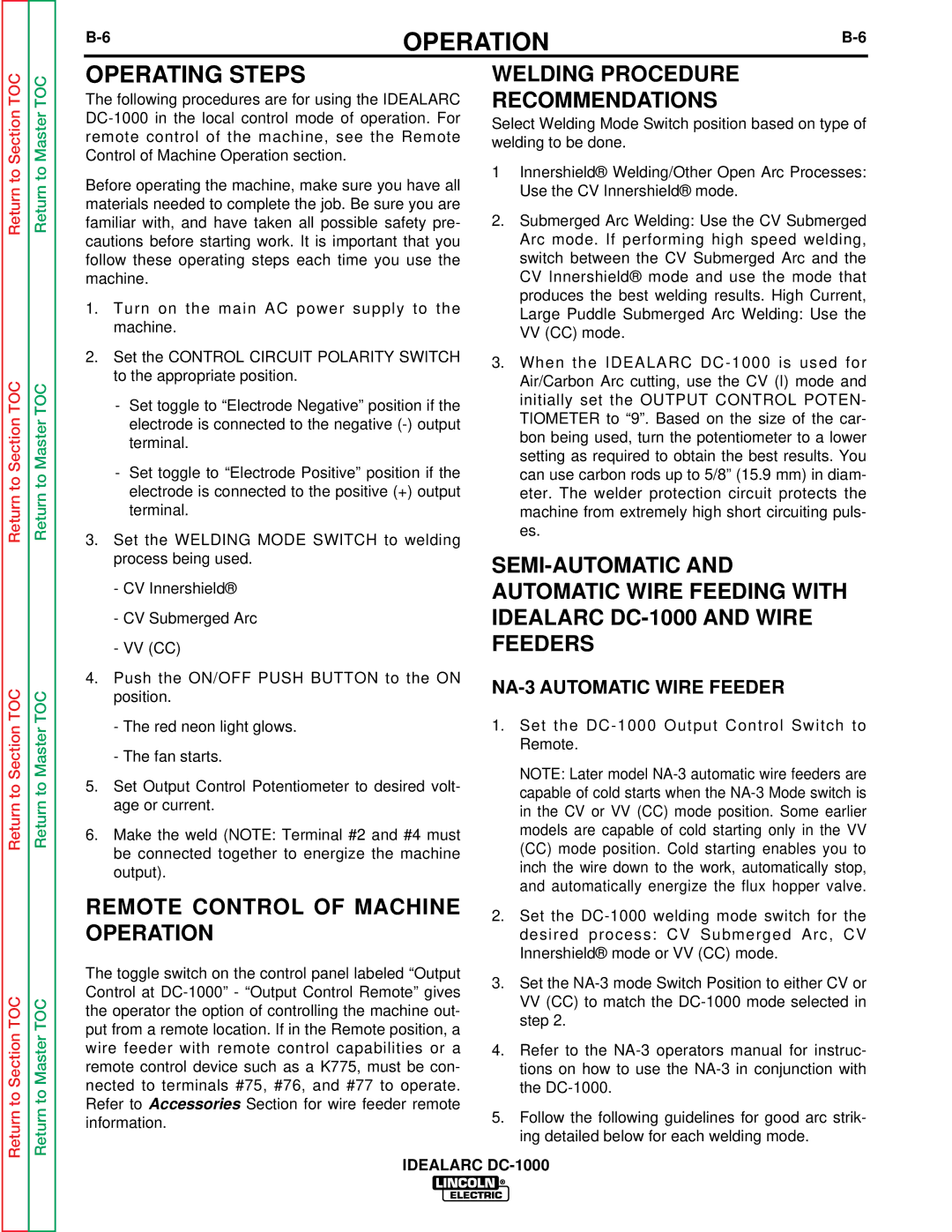
OPERATION | ||
|
|
Return to Section TOC
Return to Section TOC
Return to Section TOC
Return to Master TOC
Return to Master TOC
Return to Master TOC
OPERATING STEPS
The following procedures are for using the IDEALARC
Before operating the machine, make sure you have all materials needed to complete the job. Be sure you are familiar with, and have taken all possible safety pre- cautions before starting work. It is important that you follow these operating steps each time you use the machine.
1.Turn on the main AC power supply to the machine.
2.Set the CONTROL CIRCUIT POLARITY SWITCH to the appropriate position.
-Set toggle to “Electrode Negative” position if the electrode is connected to the negative
-Set toggle to “Electrode Positive” position if the electrode is connected to the positive (+) output terminal.
3.Set the WELDING MODE SWITCH to welding process being used.
-CV Innershield®
-CV Submerged Arc
-VV (CC)
4.Push the ON/OFF PUSH BUTTON to the ON position.
-The red neon light glows.
-The fan starts.
5.Set Output Control Potentiometer to desired volt- age or current.
6.Make the weld (NOTE: Terminal #2 and #4 must be connected together to energize the machine output).
WELDING PROCEDURE
RECOMMENDATIONS
Select Welding Mode Switch position based on type of welding to be done.
1Innershield® Welding/Other Open Arc Processes: Use the CV Innershield® mode.
2.Submerged Arc Welding: Use the CV Submerged Arc mode. If performing high speed welding, switch between the CV Submerged Arc and the CV Innershield® mode and use the mode that produces the best welding results. High Current, Large Puddle Submerged Arc Welding: Use the VV (CC) mode.
3.When the IDEALARC
NA-3 AUTOMATIC WIRE FEEDER
1.Set the
NOTE: Later model
Return to Section TOC
Return to Master TOC
REMOTE CONTROL OF MACHINE OPERATION
The toggle switch on the control panel labeled “Output Control at
2.Set the
3.Set the
4.Refer to the
5.Follow the following guidelines for good arc strik- ing detailed below for each welding mode.
